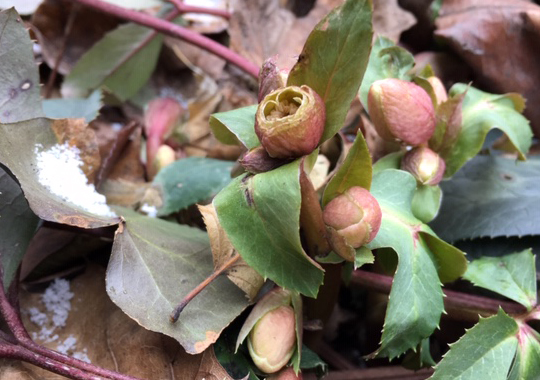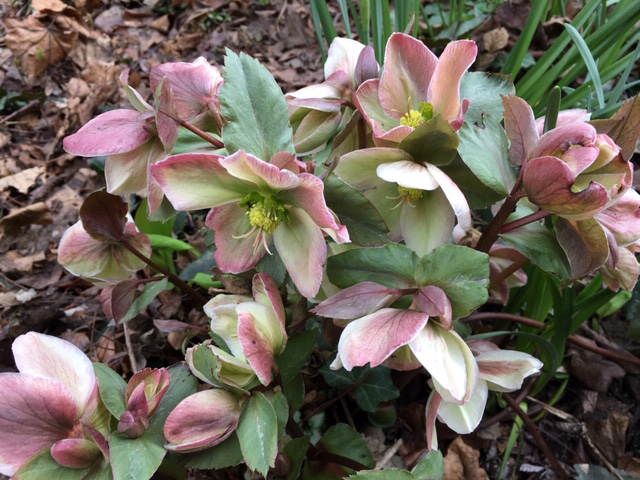
This morning, as I waddled in my full-length puffy coat down the front walk amid the slabs of gray ice in my garden, I saw something amazing and heartening: the bud of a hellebore, trying to bloom under a dusting of snow.
It’s a bold move for a flower, at 9 degrees F in early March. But that’s why hellebores have a place in so many gardens: They flower really early, when most other plants are still dormant. In warmer places such as Britain—or even in warmer Chicago winters—they may start blooming as early as February or even January. They also can easily be forced in greenhouses (which is why they are often seen blooming in indoor flower and garden shows).
Most hellebore species come from the Balkan mountains of eastern Europe, which accounts for their cold-hardiness. Still, why would a plant bloom so early? You can ask the same question of vernal witch-hazel. This small Midwestern native tree has been blooming for weeks, even when its yellow-and-red flowers were encased in ice.
The answer is pollination. The plants that have evolved to bloom first have the undivided attention of the earliest-emerging insects, which will spread their pollen from flower to flower to fertilize future seeds. Hellebores and witch-hazels risk harsh weather, but they face much less competition for pollinating services than they would in May.
Nowadays, most garden hellebores are hybrids. There’s a wide variety available, with flower colors that range from light green through white, pink and coral to a burgundy so dark it’s nearly black.
Native hellebores have just five broad petals, but hybrids have been bred that have fluffy double flowers and many other variations.

Hellebore species and older varieties tend to have downward-facing flowers. To me, it seems a wise precaution for blooms that are likely to get snowed on. However, gardeners tend to want their flowers to show off more, so newer hybrids usually have more upward- and outward-facing blooms, often on taller stalks.
The plants are very long-blooming, with the flowers lasting a month or more in my garden to share the spotlight with daffodils and tulips.
The stiff, leathery foliage of hellebores is usually evergreen, even in my climate. After the flowers fade in late spring, the foliage will still makes an attractive mound; in some varieties, the leaves are streaked or spotted with silver.
However, by this time in the winter, the foliage is pretty beat up. Bitter cold, dry winds and sidewalk salt take a toll. Before the flowers are fully open, I need to tidy up the plants, trimming off all the leaves that are brown or frazzled.
It will be chilly work, but I’d be ashamed to complain. If the weather isn’t too cold for hellebores, it’s not too cold for me to do a little primping so these brave early blooms can shine.


